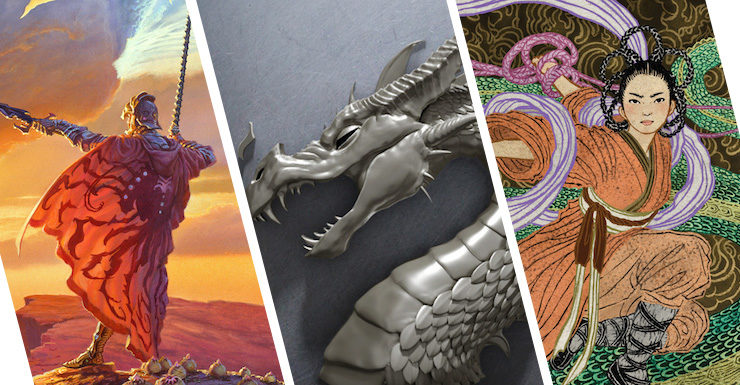There’s something appealing about a book that does things a little differently. Maybe it doesn’t break the rules, but bends them? Tries something new? Experiments with narrative? That’s absolutely my jam. I love when writers find new ways, new formats, and new styles to help elevate narration. Tricks of the trade that deliver information, or tell the reader something new, or force them to look at a story in a new way.
Inspired by a bevy of these tricks in Ruin of Kings, coming soon from Jenn Lyons, I thought I’d highlight a few other stories that utilize different devices to burst free from the housing of conventional narrative, and try to teach the reader something in the process.
Ruin of Kings by Jenn Lyons
Buy the Book
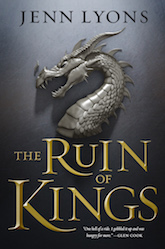

The Ruin of Kings
Ruin of Kings—the story of Kihrin, a young man coming to terms with his potential royal heritage, and the pivotal role he may have in either preserving an empire or destroying it—starts with an in-world author’s note, making this book an artifact that actually exists within the world of the novel. Readers soon realize it’s actually a transcript of dialogue between Kihrin and his captor, as he awaits trial. And there are footnotes from the original note taker, refuting information, or confirming rumors. Boy, are there footnotes! If you relish in-world texts informing dialogues, and revealing world building through characterization, then you are going to go bananas over this book! And while there are some other interesting narrative tricks at play in Ruin of Kings, we’ll save those for another article…
The Stormlight Archive by Brandon Sanderson
Buy the Book
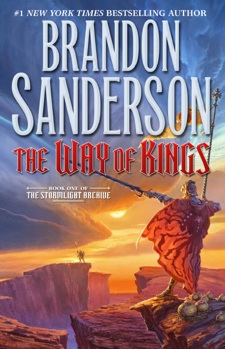

The Way of Kings
Sanderson is no stranger to utilizing epigraphs to teach readers about his world, and that device is most on display for his epic series, The Stormlight Archive. Set on the planet Roshar, a world wracked by frequent magical hurricane-like storms, this planet is home to several god-like beings, complicated cultures, deep histories, and much more. Sanderson explores those in his epigraphs before each chapter, where he details in-world letters between characters, quotes from historical figures, texts from history books, and more. He’ll also feature small short stories about events that are happening throughout the world, that may not directly affect the plot, but create a more immersive experience for readers. It helps the world remain grounded, while also expanding it in a way that feels and looks organic, but is actually a very clever mechanic to highlight world-building without info-dumping.
The Broken Earth Trilogy by N. K. Jemisin
Buy the Book
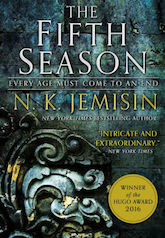

The Fifth Season
Jemisin also utilizes epigraphs to help her deepen her world, and has frequently used similar narrative devices to convey world-building centered on religion, history, character, magic, and more. In the Hugo Award winning The Fifth Season and its sequels, she uses epigraphs to get into the nitty-gritty of the various apocalypses that have rocked her planet. The world of the Broken Earth trilogy is inherently unstable, and the slightest tectonic shifts can bring about a Season, an in-world word for one of these devastating events. Society can be upturned in a moment’s notice, and so Jemisin uses space at the back of each chapter to expand on the various Seasons that have afflicted this planet, the stone-lore that has cropped up around them (steadfast rules to live by in times of a Season), as well as notes from history, both recent and ancient, that help teach us of the way this world works. Jemisin is brilliant in her applications of these bits of history and world-building, and as you read, you start to cobble together a better understanding of the world, and the truth that lies at the core of it all.
A Conspiracy of Truths by Alexandra Rowland
Buy the Book
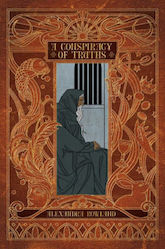

A Conspiracy of Truths
Roland’s debut novel, coming out October of this year, follows the trials and tribulations of a crotchety old man named Chant—which represents a title, an occupation, and a name all in one. Chant has been wrongfully imprisoned in the tiny country of Nuryevet, and because he can’t keep his mouth shut, he’s then imprisoned again. What follows is a tale of political intrigue, revolution, and stories. Chant tells stories for many reasons: to illustrate a point, to help spread empathy, and more often than not, to help him get what he wants. Rowland does a brilliant job throughout the novel of using the various stories, languages, tales, myths, and songs that Chant has learned in his long life to get people on his side. Even further, she doesn’t just tell us about the stories, she actually tells us the stories through Chant. These moments in the novel, when a pivotal scene is punctuated by a story of swans or swords or the sea and those who wander it, elevate an already captivating story into something even more intricate and lovely.
The Descent of Monsters by JY Yang
Buy the Book
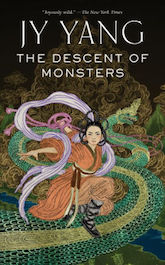

The Descent of Monsters
Continuing the tale that they began in their first two Tensorate novellas, Yang does something completely unexpected and fresh in their third novella, The Descent of Monsters: it’s told entirely in an epistolary format. The story of a Tensorate official working to uncover the tragedy that occurred at the Rewar Teng Institute of Experimental Methods, Investigator Chuwan begins to suspect foul play and must work to understand what happened, and uncover whether the mysterious Rider and Sanao Aheka of the Machinists are involved in the atrocity. Told in a series of letters to loved ones, official Tensorate reports and interviews, blacked-out government documents, and more, Yang does what they do best: tell a compelling story in an inventive format, continue to unfold the mysteries of their world, and create lively and complex characters in between the pages of letters. This novella is an incredible feat of style and structure, as well as story, and I can only hope Yang continues to push their work in new and unexpected directions as they have here.
Martin Cahill is a contributor to Tor.com, as well as Book Riot and Strange Horizons. He has fiction forthcoming at Beneath Ceaseless Skies and Fireside Fiction. You can follow his musings on Twitter @McflyCahill90.










